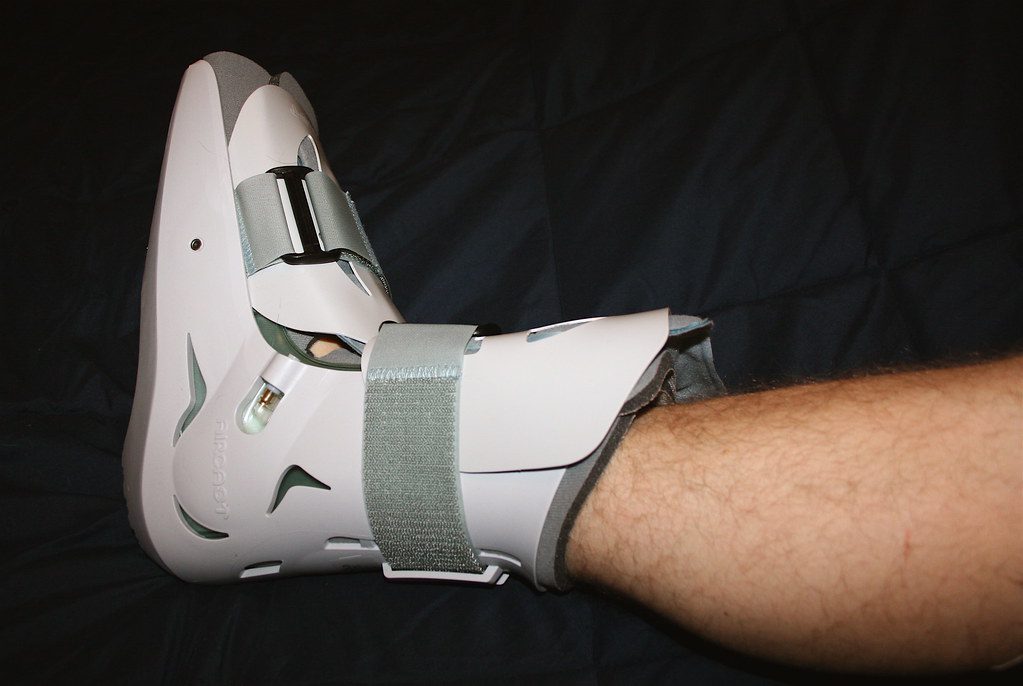Table of Contents
What Is A Stress Fracture And How Do I Treat It?
It’s something every runner dreads the sound of a stress fracture. It is a hairline crack or break in a runner’s weight-bearing bones. They occur when muscles around the legs are tired and unable to provide shock support to the bones and tendons.

A stress fracture happens over some time and is most likely to affect these areas:
- Heel
- Shin (Tibia)
- Metatarsal (Second and Third)
- Femur
- Ankle
- Hip
What Causes a Stress Fracture?
If you’re a runner training for a marathon, a drastic change in your training plan can cause muscles and bones that are not used to the stress, to break. This can be from different intensities of the exercise or through different terrains.
For example, if you commonly run on roads but change to trail running, the camber of your foot when it lands will be different. Your muscles will not be used to this level of stress and can become tired quickly. Then, your bones lose protection and can break over time.
Other causes include:
- Bad Training Plan
- Poor Diet and Nutrition
- Old Shoes
- The Wrong Type of Shoes
- Bone Density
- Ignoring Shin Splints
- Not Engaging in Proper Active Recovery
- Vitamin-D Deficiency
- Calcium Deficiency
- Bad Running Form
- Being an XX Female (studies show women are at higher risk of stress fractures)
What are the Implications?
It can take you out of running for up to 6 weeks due to healing time. Ignoring pain will increase this time, so it’s important to contact your GP if you’re suspicious.
When your body experiences pain, you subconsciously change your movement to compensate, which will translate into bad running form over time. So, it’s important to identify and treat immediately.
Unfortunately, there are cases where stress fractures have worsened and caused runners to have surgery. This surgery involves screws and internal splints to keep the bone together.
How Do You Treat a Stress Fracture?
If you are unsure of whether you have experienced a stress fracture, try the hop test. Hop on the leg if you feel pain and if it hurts when landing, you’ll likely have a stress fracture.
It is important you see your GP quickly for an MRI (they don’t tend to show up on X-rays). You will be advised to keep the affected area elevated and apply a cold compress to prevent swelling. They may also provide you with an external splint to maintain the structural integrity of your bone.
Stress fracture recovery may last for 6 to 8 weeks and during this time you can take painkillers such as paracetamol or ibuprofen. In the final stages, you can engage in active recovery exercises such as walking, swimming or yoga.
How Can You Prevent a Stress Fracture?
As you know, this is every runner’s nightmare, you may want to know how to prevent it from happening. Here are some ways you can keep stress fractures at bay:
- Wear shock-absorbing shoes
- Use a tailored training plan
- Engage in active recovery
- Wear compression socks for oxygen circulation
- Keep a healthy and nutritional diet
- Use energy gels for long-distance running
- Visit a physiotherapist for stretching exercises and to improve your form
- Quicken your cadence by shortening your running stride
Final Thought
Finally, it’s important to understand that running is cardiovascular and burns energy from muscles. With this, you’ll need to incorporate weight training so your muscles can remain strong and protect your bones.
If you want to learn about other running injuries i.e. Sprained Ankle, here is my latest blog post – How to Heal From Sprained Ankle Faster.





[…] check out my post for other types of running injuries such as Stress Fracture and Treatment For Runners and Shin Splints. Thanks for […]
[…] a similar situation. To find out about another common running injury, please visit my posts such as Stress Fracture and Treatment and Knee Pain After […]
[…] It is important to know what your body is telling you. Shin splints occur on the inside of your shins. If you feel pain on the outside of your leg, then it could be internal swelling called ‘compartment syndrome’. Or, if there is pain in the lower leg, it could be a stress fracture. […]